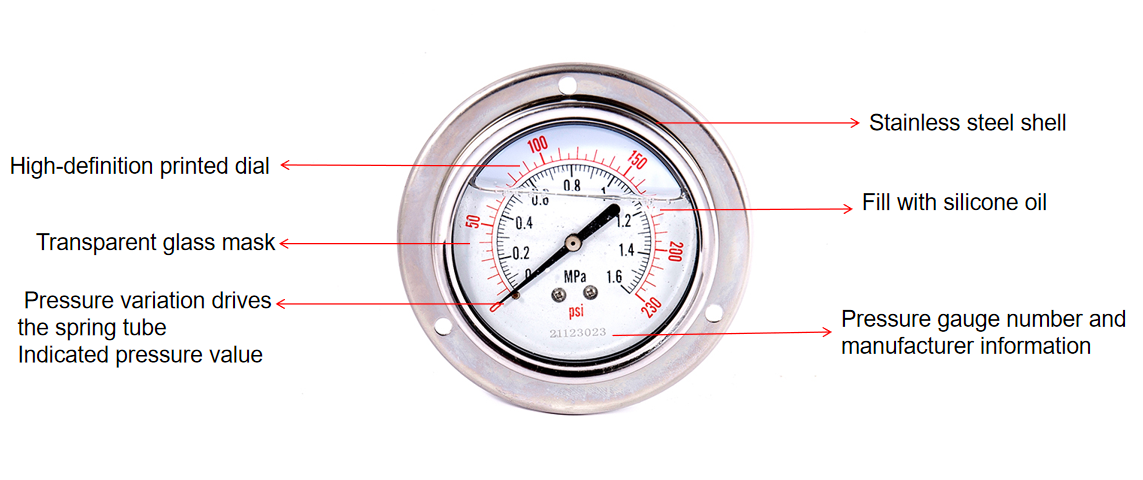YD series positioning pressure gauges
Cat:Pressure Gauge
◆ Model: YD40 YD50 YD60 YD75 YD100 YD150 ◆ The main body of the instrument is a general pressure gau...
See Details
The pointer of the pressure gauge not returning to zero is definitely caused by multiple reasons. The following are the core ideas and specific methods to solve this problem:

Core point:
If the pointer of the pressure gauge does not return to zero, you need to first identify the cause. It could be that the pointer is loose, there is a fault in the internal components, there is an abnormality in the pressure element, or it is affected by external factors. You can check step by step and handle it specifically. If necessary, seek professional help
Detailed solution method
Step 1 : Is to check if the pointer is loose.
·Observe the relative position of the pointer and the dial, gently tap the pressure gauge casing, and check if the pointer moves.
·If the pointer is loose, you can open the cover of the watch, use tweezers or a screwdriver to carefully adjust the position of the pointer so that it aligns with the zero mark, and then tighten the fixing screw of the pointer.
Step 2: Check if the internal components are faulty.
·Open the cover of the instrument and check if there is any jamming, wear or foreign object getting stuck in the gear transmission system.
·If there are foreign objects between the gears, clean them with a clean soft cloth or tweezers; if the gears are severely worn, new gear components need to be replaced.
Step 3:Inspect the pressurized components.
·The pressure-bearing components, such as the spring tube, may deform or leak, causing the pointer not to return to zero.
· It can be determined through the pressure test. Slowly increase the pressure on the pressure gauge and observe if the pointer returns to the zero position. If the pointer behaves abnormally during the pressure increase or if the pointer does not return to zero after the pressure is released, it indicates that the spring tube is damaged and a new pressure-bearing component needs to be replaced.Ensure that the pressure gauge is installed in a stable position to avoid vibration; it should be away from high-temperature sources and corrosive media. If the installation environment is poor, the conditions for installation need to be improved.
Step 4:Take into account the influence of external factors.
·Check whether the pressure gauge is installed correctly and whether it is affected by vibration, high temperature or corrosive media.
· Ensure that the pressure gauge is installed in a stable position to avoid vibration; it should be away from high-temperature sources and corrosive media. If the installation environment is poor, the conditions for installation need to be improved.
Step 5:Calibration or submission for inspection.
·If after the above checks and treatments, the pointer still does not return to zero, it might be necessary to calibrate the pressure gauge.
·The pressure gauge can be calibrated using a standard pressure gauge. Adjust the pointer position according to the calibration procedures. If you are unable to calibrate it yourself, you should send the pressure gauge to a professional metrology verification institution for verification and calibration.
If the above methods fail to solve the problem, or if you are unsure about the operation, it is recommended that you contact professional instrument maintenance personnel or the manufacturer for handling to avoid greater losses.